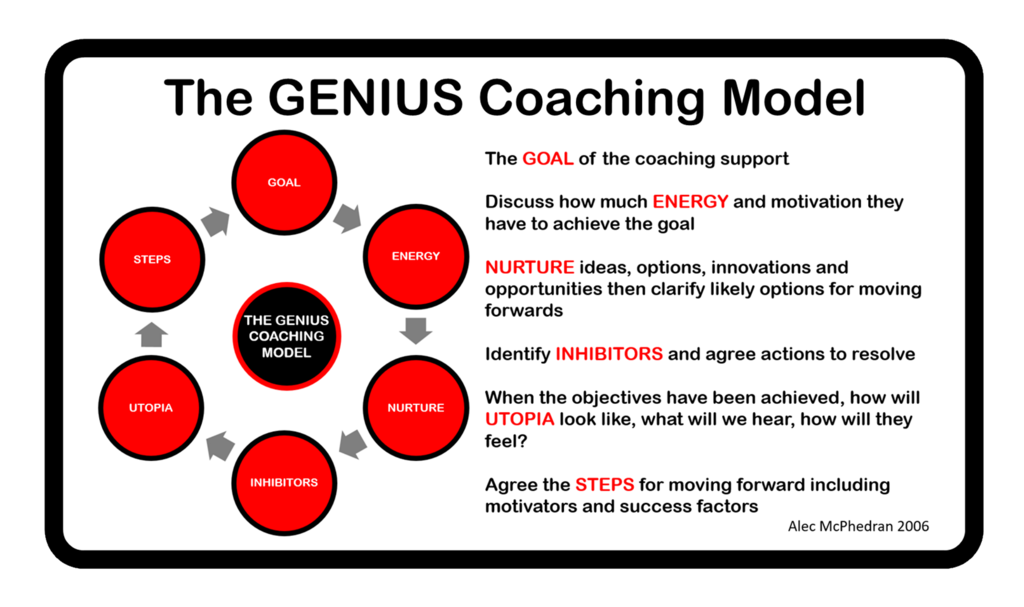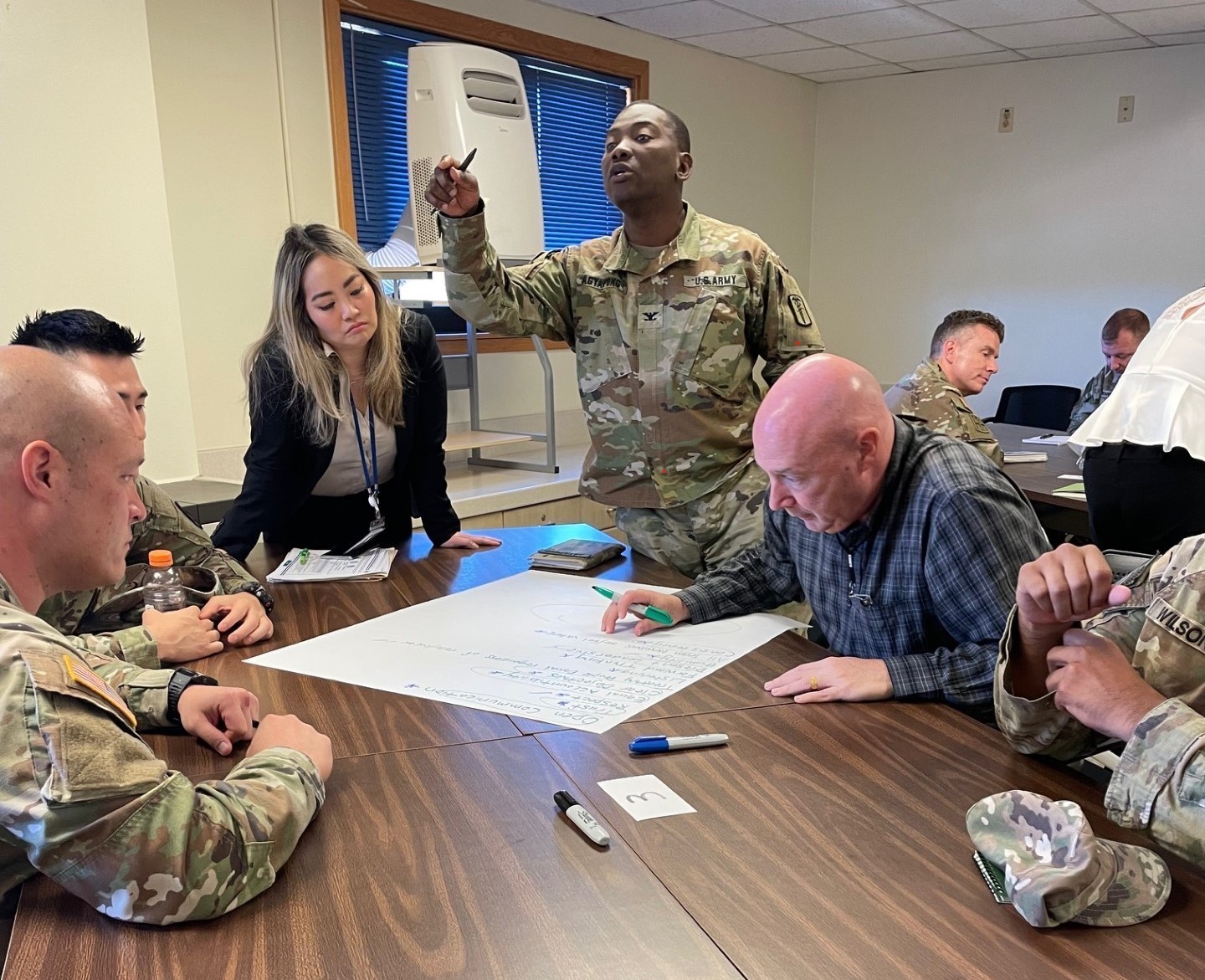
In our fast-moving world, where executives have a lot on their plates, strong leadership skills matter more than ever. Did you know 85% of executives see peer coaching as key to developing these skills? Peer coaching is all about working together and learning from each other. It gives leaders a chance to share experiences, see things in new ways, and sharpen their skills in a supportive setting. This article looks at why peer coaching is so important for global leaders and offers a step-by-step guide on how to use it to boost leadership skills. We'll also explore different models and formats and talk about how to track its impact on leadership growth. Whether you're a seasoned leader or new to the role, knowing how peer coaching can boost your abilities is vital. Let's explore how this valuable tool can help shape the leaders of the future!
Understanding Peer Coaching and Its Role in Leadership Development
Defining Peer Coaching for Executives
Peer coaching is a collaborative approach where individuals at the same level assist each other in personal and professional growth. This method emphasizes equality and reciprocity, allowing participants to learn from one another. Unlike traditional coaching, peer coaching creates a safe environment for open discussions, enabling participants to reflect on challenges and enhance self-awareness. Additionally, it refines essential communication skills such as active listening, which contributes to more effective workplace interactions.
Why Global Executives Benefit from Peer Coaching
For global executives, peer coaching reduces the pressures of hierarchical structures, fostering a spirit of collaboration. It provides candid feedback, essential for identifying strengths and areas for improvement. Moreover, peer coaching offers emotional support, aiding in stress management. By emphasizing growth, it enhances talent retention and aligns executives with shared objectives, thereby improving decision-making. This approach also strengthens accountability and cultivates robust relationships among diverse leadership teams.
Step-by-Step Guide to Implementing Peer Coaching for Leadership Enhancement
Establish Clear Objectives for Leadership-Focused Peer Coaching
Define Specific Leadership Goals for Peer Coaching Success
To kick off a successful peer coaching program, you need clear objectives that match your organization's goals and values. This ensures the program fits into the bigger picture of what your organization is all about. When you know what you want to achieve—like boosting leadership skills, improving teamwork, or enhancing communication—you can keep coaching sessions focused and useful. For example, if better communication is the aim, the program should have activities and ways to track progress in that area. Regular check-ins and data analysis can pinpoint where leadership can grow, helping shape the program's goals.

Identify Leadership Outcomes: Skills, Team Dynamics, Culture
Once goals are set, it's important to outline what you hope to get out of the program. Improved leadership might look like better team management, sharper negotiation skills, or being more adaptable. Think about how the program can positively impact team dynamics and the overall company culture. Encouraging feedback and continuous learning can create a more collaborative work environment. Clearly defined outcomes help participants see the program's value and align their efforts to hit these targets. For example, a program might aim to boost principals' leadership skills by enhancing communication and problem-solving within their teams.
Secure Leadership Support for Peer Coaching Initiatives
Gain Senior Leadership Endorsement for Peer Coaching
Getting leadership on board is key for the success of a peer coaching program. Engage senior leaders early to secure their endorsement and resources. Show how the program aligns with the organization’s goals and how it can benefit leadership development. Leaders set the tone and can ensure the program gets the attention it needs. For example, a superintendent publicly supporting the program and allowing time during work hours for sessions shows strong leadership backing.
Communicate Leadership’s Commitment for Peer Coaching Success
Once you have leadership support, communicate this commitment to everyone. Use emails, newsletters, or meetings to stress the program's importance and the backing it has from the top. This not only encourages participation but also ensures the program gets the necessary time and resources. Clear communication from leadership can help overcome resistance and foster a culture of engagement.
Design a Structured Peer Coaching Framework
Develop Coaching Roles, Responsibilities, and Formats
A solid coaching framework is crucial. Define roles, responsibilities, session formats, and provide guides or templates for consistency. Coaches guide sessions and offer feedback, while coachees should be open to growth. Effective coaching involves preparation, observation, analysis, and support phases, with clear action plans and timelines. Sessions typically include a welcome, reflection, problem-solving, planning, and feedback.
Create Peer Coaching Guides, Templates, and Case Studies
Develop resources like coaching guides, templates, and case studies to support the framework. Guides can offer step-by-step session instructions, while templates help set goals and track progress. Case studies provide real-world examples to inspire participants. These resources are valuable for both new and experienced participants, ensuring everyone has the tools they need to succeed.
Select Participants with Leadership Potential for Peer Coaching
Identify Potential Leaders for Coaching Roles
Choosing the right participants is vital. Focus on those with leadership potential to serve as coaches and coachees, aligning with program goals. Thoughtful matching, often pairing similar roles or complementary skills, enhances effectiveness. For instance, pairing a principal with an assistant principal from another school can be very effective.
Provide Training for Peer Coaching Excellence
Train Peer Coaches in Effective Coaching Techniques
Training coaches in essential techniques is crucial. Organize workshops focusing on active listening, effective questioning, and constructive feedback. These skills help coaches facilitate meaningful conversations. Training should include practice opportunities and role-plays to build confidence. Establishing trust during training creates a safe space for open communication.
Offer Practice Opportunities and Refresher Courses for Coaches
Offer ongoing practice opportunities and refresher courses. This could include regular practice sessions and access to additional resources like online courses. Refresher courses reinforce key concepts and introduce new techniques. Continuous learning ensures coaches remain engaged and effective.
Launch a Pilot Peer Coaching Program for Testing
Implement a Pilot Program to Refine Coaching Structure
Before a full rollout, consider a pilot program. A small-scale pilot allows testing the structure, collecting feedback, and refining before the full launch. Select a small group for the pilot and monitor their progress. Use surveys and interviews to gather feedback and identify improvements.
Identify Improvements for Peer Coaching Before Full Rollout
Analyze feedback to pinpoint issues and areas for improvement. This could mean adjusting the framework or adding training. Use this information to refine the program and ensure effectiveness before a full launch. Addressing challenges early increases the likelihood of success.
Communicate the Peer Coaching Program Organization-Wide
Announce Peer Coaching Program with Participation Instructions
Once ready, announce the program to the whole organization. Clear instructions on participation and highlighting benefits motivate engagement. Use various channels like emails and newsletters to reach everyone. Provide details on how to participate, time commitments, and prerequisites.
Highlight Peer Coaching Benefits to Motivate Engagement
Besides logistics, stress the benefits of participating. Highlight personal and professional development, improved leadership skills, and career prospects. Outline expected commitments, including time for sessions and additional activities. Clear communication motivates engagement.
Conduct Regular Peer Coaching Sessions for Leadership Growth
Schedule Regular Coaching Conversations with Role Rotation
Keep momentum with regular sessions. Schedule 30-minute conversations with alternating roles between coach and coachee. This promotes balanced development and mutual learning. Sessions usually include a welcome, reflection, problem-solving, planning, and summary.
Follow a Structured Peer Coaching Process for Effectiveness
Each session should follow a structured process. Start with pre-conversation preparation, conduct a diagnostic run-through, and end with a debrief discussion. This keeps sessions productive and focused, contributing to development.
Encourage Reflective Practices in Peer Coaching
Implement Reflection Techniques to Enhance Learning
Reflection is key for internalizing learning. Encourage journaling or reflection prompts after sessions. Provide templates with questions like "What did I learn today?" and "What actions will I take next?"
Use Guided Reflection for Self-Awareness in Leadership
Provide guided questions for self-awareness and insight. Focus on strengths, weaknesses, and future applications. Encourage discussions with peers or coaches for new perspectives. This fosters self-awareness and leadership growth.
Monitor and Evaluate Peer Coaching Program Impact
Define KPIs for Measuring Leadership Growth in Coaching
To assess effectiveness, define KPIs that align with leadership goals. These could include communication improvements or team performance. Use KPIs to track progress and evaluate impact over time.
Use Feedback Tools for Peer Coaching Insights
Gather qualitative feedback for deeper insights. Use surveys and interviews to collect input on value, challenges, and improvements. This feedback provides valuable insights into strengths and weaknesses.
Review and Iterate Peer Coaching for Improvement
Regularly Review Peer Coaching Outcomes and Feedback
Regularly review outcomes and feedback. Analyze data to identify trends and areas for improvement. Use this information to make informed decisions about changes needed.
Improve Peer Coaching Materials and Training Iteratively
Based on reviews, make iterative improvements. Update guides, enhance training, and refine the framework. Encourage feedback to ensure changes are well-received.
Scale the Peer Coaching Program Organization-Wide
Develop a Comprehensive Plan for Scaling Peer Coaching
After refining, create a detailed implementation plan for scaling. Use pilot insights to inform your approach, addressing challenges and improvements. Outline steps for rollout, including timelines and resources.
Roll Out Peer Coaching with Continued Leadership Support
Maintain communication and leadership support during scaling. Engage senior leaders to reinforce commitment and promote the program. Use various channels to keep employees informed and engaged.
Provide Ongoing Support for Peer Coaching Success
Offer Continuous Learning and Training for Peer Coaches
Support coaches with ongoing learning and refresher training. Provide access to courses, workshops, and webinars. Encourage participation to enhance skills.
Foster a Culture of Leadership Development through Peer Coaching
Foster a culture of improvement and development. Encourage sharing experiences and insights, creating a collaborative environment. Recognize successes to reinforce ongoing development.
Step-by-Step: Setting Up a Peer Coaching Program
- Define Objectives: Clearly state the program's goals and outcomes.
- Secure Leadership Support: Engage leaders and communicate their backing.
- Design Framework: Develop roles, responsibilities, and session formats.
- Select Participants: Identify individuals with leadership potential.
- Provide Training: Train on coaching techniques and offer practice.
- Launch Pilot: Test with a small group and gather feedback.
- Communicate Organization-Wide: Announce and highlight benefits.
- Conduct Sessions: Schedule regular sessions with a structured process.
- Encourage Reflection: Implement journaling and reflection practices.
- Monitor Impact: Define KPIs and gather feedback.
- Review and Iterate: Regularly review and make improvements.
- Scale Program: Develop a plan and roll out broadly.
- Provide Support: Offer ongoing learning and maintain improvement culture.
For more insights, visit the comprehensive guide on peer coaching.
Peer Coaching Models and Formats for Executive Growth
Different Peer Coaching Models for Executives
Peer coaching for executives comes in a variety of formats, each offering unique benefits:
- Triad Peer Coaching: Involves three individuals who rotate roles, enhancing learning through diverse feedback.
- Group Peer Coaching: Engages small groups to provide a range of perspectives.
- Reciprocal Peer Coaching: Pairs colleagues to mutually aid in skill development.
- Cross-Functional Peer Coaching: Breaks down departmental barriers to facilitate knowledge sharing.

GROW or CLEAR to guide the coaching process.
Technology-Driven Peer Coaching Solutions
Technology elevates peer coaching through:
- Virtual Platforms: Facilitate remote sessions and offer flexible scheduling.
- Digital Tools: Assist in tracking sessions and sharing resources, enhancing cross-functional coaching.
- Coaching Management Tools: Employ frameworks like CLEAR to guide discussions and monitor progress.

Measuring the Impact of Peer Coaching on Leadership Skills
Evaluating Peer Coaching's Role in Leadership Development
Peer coaching is a powerful tool for developing essential leadership skills such as self-awareness, emotional intelligence, and adaptability. By fostering collaboration and mutual learning, it enhances teamwork and communication within organizations. Participants often experience increased confidence and improved relationship-building abilities. Additionally, they report enhanced decision-making skills and stronger client connections. These coaching sessions, characterized by real-time feedback, empower leaders to tackle real-world challenges and facilitate meaningful improvements where they are most needed.

Analyzing the ROI of Peer Coaching in Organizations
Peer coaching offers the potential to cultivate leadership skills across the organization. To evaluate the return on investment (ROI), it's important to assess behavioral changes through surveys and interviews. Six months post-program, you can determine the persistence of these changes and any enhancements in team dynamics, which are indicative of a positive ROI. Furthermore, improvements in employee engagement scores and shifts in company culture serve as valuable indicators of the program's less tangible benefits.

Peer Coaching: FAQs for Global Executive Leadership
How Does Peer Coaching Enhance Team Collaboration in Global Organizations?
Peer coaching enhances team collaboration by fostering an environment where colleagues can openly share feedback, address challenges, and support each other's growth. This informal setup reduces pressure, allowing ideas to flow freely and strengthening team bonds. Additionally, it aids global teams in bridging cultural and communication gaps by building trust and understanding.

Key Benefits of Peer Coaching for Leadership Development
Peer coaching is a reciprocal process where leaders both give and receive feedback. This enhances self-awareness and hones leadership skills. By removing traditional hierarchies, it encourages openness and vulnerability, which are essential for developing emotional intelligence. Furthermore, it promotes self-reflection, enabling leaders to refine their methods and adapt their styles. Engaging in peer coaching helps leaders build respectful and trusting relationships, crucial for their growth.
Is Peer Coaching Effective for Leaders Across Industries?
Peer coaching is effective across various industries because it emphasizes shared experiences and mutual support, rather than industry-specific knowledge. Leaders benefit from exchanging diverse perspectives and problem-solving techniques, which can spark innovation and provide cross-industry insights. Its informal nature makes it suitable for leaders in any field, focusing on personal and professional growth through mutual engagement.
